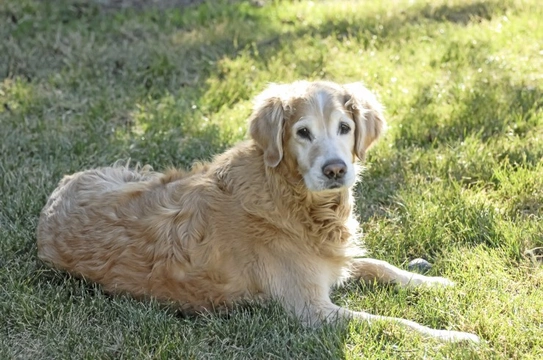
How to care for an older dog whose hindquarters are failing
There are a whole range of health conditions and care considerations to take into account when caring for an older dog, and all dogs age at different rates and may face different challenges when they do so.
Some of the physical side effects of aging in dogs include a loss of muscle tone and weakening bones and joints, and this can mean that some older dogs will develop a progressive weakness in their hindquarters that can eventually lead to the inability to walk and move around normally.
Dog breeds with long backs and short legs are those most prone to mobility problems due to muscle wastage in the hindquarters in old age, such as the Dachshund and the Basset hound. If you own a dog of a breed of this type, talk to your vet as they get older about their risk factors and how to best care for them.
If your older dog is already starting to display signs of weakening hindquarters, your vet will also be able to advise you on how to accommodate for this, and how to keep your dog comfortable and as mobile as possible.
In this article we will share some advice on how to do this, to help you to support your dog in their old age. Read on to learn more.
Finding out the cause
If your dog’s hindquarters are weakening, you will probably notice a range of symptoms of this that are apt to become worse over time. Your dog’s hindquarters may shake or tremor if they’re standing for too long, or your dog may have problems getting up and down.
You may also be able to see and feel the los of muscle if you know your dog well, and a dog whose hindquarters are becoming weaker may be more prone to falling or slipping over, being reluctant to exercise, and leaning against things or sitting down more frequently when out and about.
It is important to have your vet assess your dog and work out why their hindquarters are becoming weaker. Whilst this problem cannot generally be reversed or corrected, if the root cause can be found, your vet will be able to determine the best form of treatment or management to keep your dog mobile and happy.
The right kind of exercise
Exercise is important for old dogs as well as young ones, but this exercise needs to be right for your dog, helping to support their fitness and if possible, the retention of their muscle tone without placing the body under too much pressure or worsening the problem itself.
Keeping your dog at a healthy weight is vital because being overweight increases the strain placed on the joints and muscles, and can worsen your dog’s mobility.
Split your dog’s daily walks up into a number of short, gentle sessions, and allow your dog to warm up and cool down properly after each bout of exercise. Take your cues from your dog’s behaviour, and don’t push them to continue if they are tired or uncomfortable.
Walking your dog up gentle slopes might help to strengthen their muscles, but this may not be appropriate for dogs with progressive muscle wastage, or those with little remaining muscle tone. Again, ask your vet for advice on the right approach for your own dog.
Other therapies
Physiotherapy, massage and hydrotherapy can be really helpful for dogs with muscle wastage, for a variety of reasons. Manipulating the joints and muscles gently can help to retain your dog’s freedom of movement and comfort, and hydrotherapy provides gentle resistance exercise that is comfortable and gives your dog a proper workout at their own pace.
Your vet will be able to advise on a good approach for your own dog, and if your dog is insured under a comprehensive policy, the cost of therapeutic treatments might be covered by your insurer.
Making your home easier for your dog to navigate
There are a few things you can do around the home to make it easier for your dog to get around, such as keeping walkways clear and ensuring that your floors are non-slip. If you have steps or stairs around the home, integrating ramps to help your dog to get about – or to get into the car – will also help.
Appropriate nutrition
Feeding your dog the right diet can help to support their body and mind, and provide essential nutrients that keep your dog healthy into old age. Choose a complete and balanced diet that is a good fit for your dog’s life stage, and that takes into account their limited mobility. Certain supplements or special veterinary diets might help too, which is something else your vet will discuss with you.
Mobility aids
If your dog is unable to get around on their own or if their failing hindquarters are worsening and cannot be corrected, you might need to look at using mobility aids for your dog.
Mobility aids come in a range of forms, from slings to help you to support the weight of your dog’s back legs, to wheeled devices that your dog’s hindquarters sit in so that they can wheel themselves around propelled by their front legs.
Whilst wheeled mobility aids aren’t necessarily appropriate for every dog, they are something that is worth looking into, and something that your dog’s breed club or your vet might be able to advise on.
Many dogs – particularly Dachshunds – tend to get on very well with wheeled mobility aids, and once you and your dog get used to using them, you might find that they’re easier to work with than you expect.



